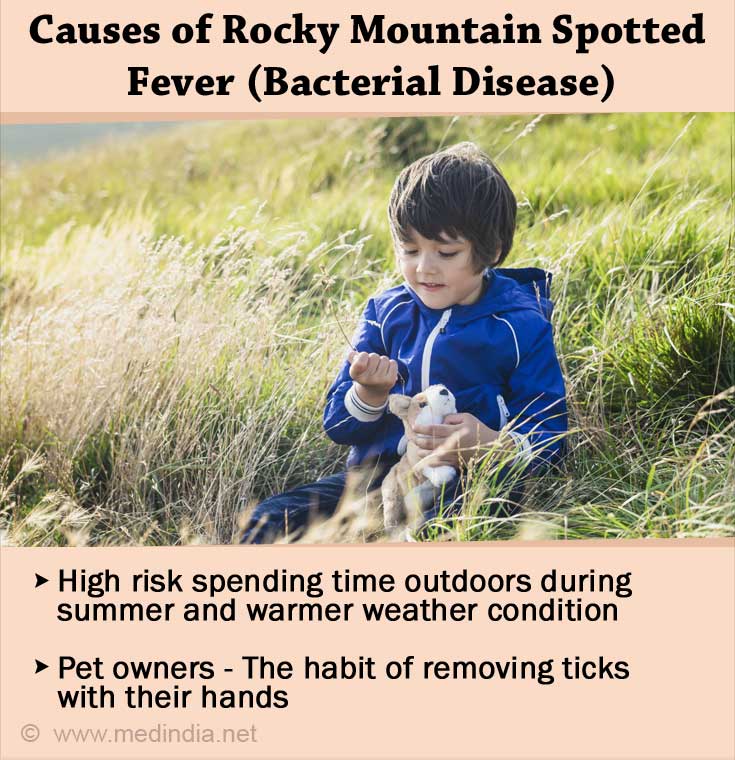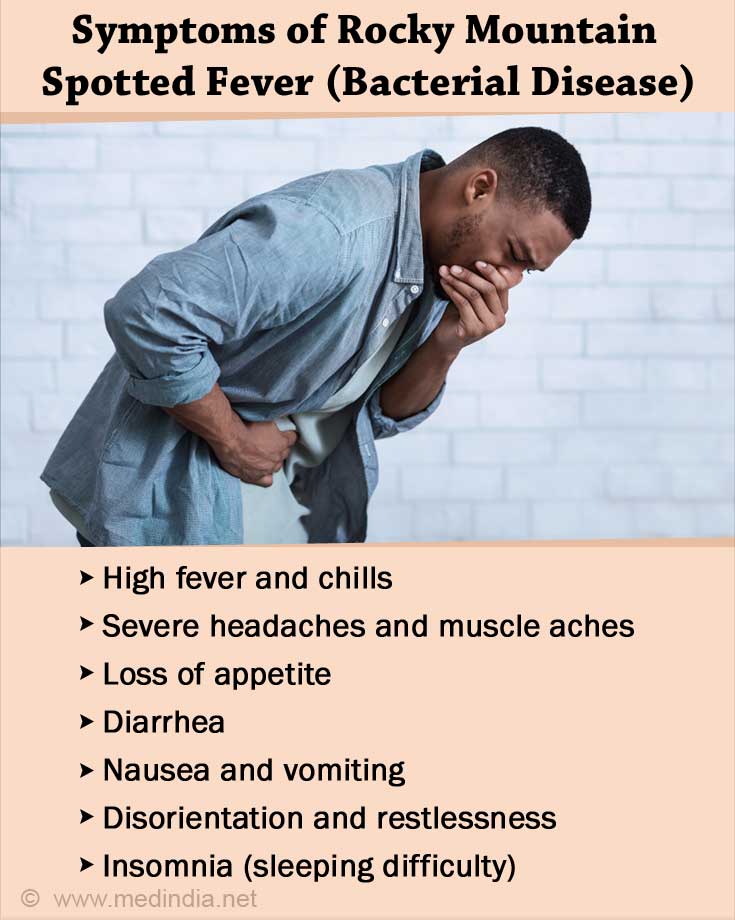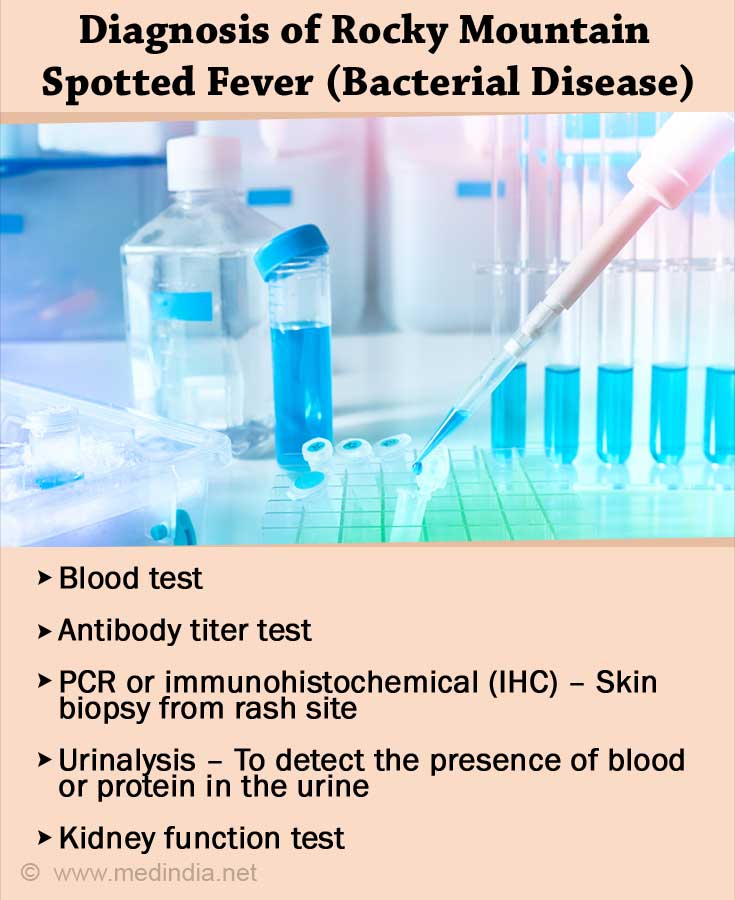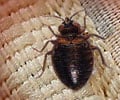- Signs and Symptoms - (http://www.cdc.gov/rmsf/symptoms/)
- Rocky Mountain spotted fever - (http://www.mayoclinic.org/diseases-conditions/rocky-mountain-spotted-fever/basics/definition/con-20032780)
What is Rocky Mountain Spotted Fever?
Despite its name, Rocky Mountain spotted fever is not a disease that is localized to the mountainous regions, but is one that is present throughout the Americas, both North and South. The disease earned its name ‘Rocky Mountain’ spotted fever because this is where the disease was first identified. Rocky Mountain spotted fever is a tick-borne illness that is caused by a bacterium which is passed on to humans from certain species of ticks. This infection is most common in the southeastern regions of the United States, but it is not uncommon in other parts of the continents including South and Central America, and even as far north as Canada.
Rickettsia rickettsii is the species of bacterium that is responsible for the infection. The illness caused is potentially life threatening because of the high risk of damage to vital internal organs.
Prompt treatment is necessary for Rocky Mountain spotted fever, in the absence of which it can cause serious damage to internal organs, such as kidneys and heart. In such cases the damage to internal organs usually occurs as a result of vasculitis, which is a condition in which the blood vessels begin to leak.
Causes of Rocky Mountain Spotted Fever
The bacterium responsible for Rocky Mountain spotted fever, Rickettsia rickettsii, is passed on to humans through tick bites.
- The American dog tick is the most common source of infection in the United States and most prevalent just east of the Rocky Mountains.
- The Rocky Mountain wood tick is another potential source of transmission and is found mainly in the United States.
- The brown dog tick, which is found across the world, has also been implicated in the transmission of Rocky Mountain spotted fever (RMSF), but this has been specific to the southwestern US and along the United States’ southern border with Mexico.
- In the recent past, the bulk of Rocky Mountain spotted fever cases have been reported in states in the eastern region of United States, in Virginia, Maryland, and North and South Carolina. There have also been reports of cases in Georgia, Tennessee and Oklahoma.
- The condition affects children more frequently, probably because they spend more time outdoors. This is also partly the reason for the dramatic rise in incidents during the spring and summer, when people spend more time outdoors.

You don’t need to panic and avoid outdoor activities altogether, as the bacteria is present in just 1 out of a 1,000 ticks. Risk factors include the following:
- Spending time outdoors, engaging in activities like hiking, trekking or climbing. This is obviously only a risk in areas where the problem is endemic.
- Pet owners can put themselves at risk if they are in the habit of removing and crushing ticks with their bare hands.
- The risk is higher during summer and under warmer weather conditions, not just because people spend more time outdoors, but also because ticks are more active in such weather.
Symptoms of Rocky Mountain Spotted Fever
Rocky Mountain spotted fever isn’t easy to recognize as the symptoms closely mimic those of other diseases. This does pose some problems as the disease can be a lot more threatening than the symptoms would suggest. Symptoms do not appear as soon as the infection takes place and may appear within the first week or even two weeks later. The initial symptoms of Rocky Mountain spotted fever include:
- High fever and chills
- Severe headaches and muscle aches
- Loss of appetite
- Diarrhea
- Nausea and vomiting
- Disorientation and restlessness
- Insomnia

The only distinctive feature of the infection is the associated Rocky Mountain spotted fever is the rash that appears around two to five days after the first symptoms surface.
- The rash is initially marked with the appearance of small pink dots or spots that are flat and non-itchy.
- These spots appear on the wrists, forearms, palms, ankles and progressively spread to cover the torso as well.
- Once the disease progresses you observe the petechial rash of the disease with dark red or purple spots. These spots do not appear until the sixth day after the initial symptoms, and they may not appear in all patients. This is a warning sign that the disease has progressed to become a serious threat. Ideally, treatment should begin well before the appearance of petechiae.
Keep in mind that a rash does not always appear and this is what makes the condition so hard to diagnose. In cases where the rash does not appear, the disease may not be obvious until it is too late. Physicians are advised to err on the side of caution if other symptoms suggest the possibility of Rocky Mountain spotted fever even in the absence of the rash.
There is a high risk of fatal complications developing once the disease progresses to the advanced stage as damage to the lining of blood vessels causes them to leak and the resultant bleeding or clot formation can cause kidney damage and failure, damage to blood vessels in the brain and seizures, heart and lung failure, retinal vasculitis and gangrene development in the extremities.
Diagnosis of Rocky Mountain Spotted Fever
Diagnosis of Rocky Mountain spotted fever can be a little tricky because of the confusing symptoms. Unfortunately, the risks of fatality and complications developing are extremely high as the condition progresses, which is why treatment cannot be delayed until an accurate diagnosis is made. Doctors usually make a diagnosis based on visible symptoms and based on information provided by the patient. If there is any suspicion of the disease, doctors are advised to begin treatment promptly.
The diagnosis may be confirmed simultaneously with laboratory tests, but these can take time and they are also often not accurate as the infection often does not show up until in the advanced stages.
Diagnostic tests that are used to confirm the presence of Rocky Mountain fever include:
- Blood tests to check blood count
- Kidney function tests
- Antibody titer test
- PCR or immunohistochemical (IHC) staining from a skin biopsy from the rash site
- Urinalysis to detect the presence of blood or protein in urine

Treatment for Rocky Mountain Spotted Fever
Treatment for Rocky Mountain spotted fever is extremely effective if treatment begins within the first five days of the appearance of symptoms. In such cases, the mortality rate of the disease is reduced significantly, from 20 percent to as low as 5 percent. Treatment for the disease involves the administration of antibiotics to fight off the infection. In severe cases, antibiotics are administered intravenously and hospitalization is often necessary.








